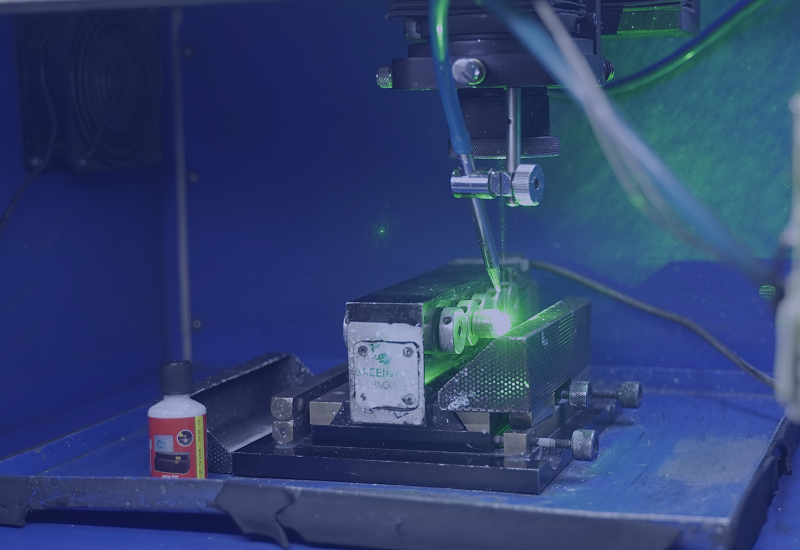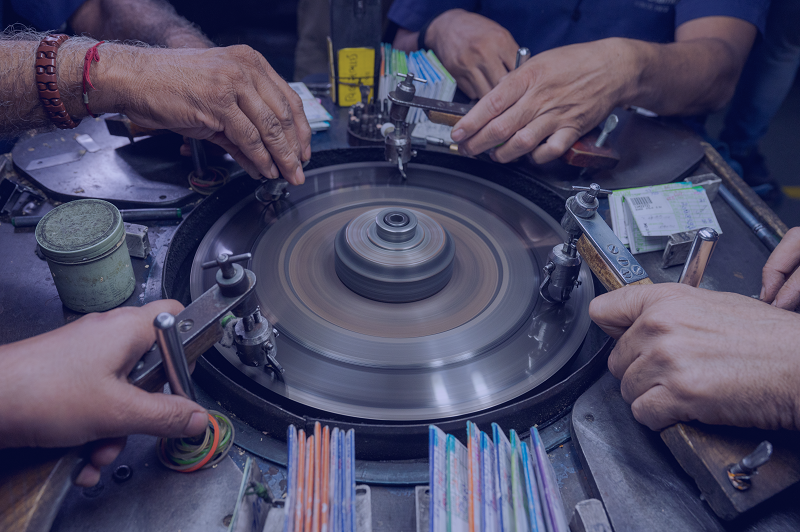
Transforming A Rough Diamond Into A Polished Gemstone - A Scientific Art
For over five decades, Laxmi Diamond has witnessed the rough to the ready transformation of some of the finest, exquisite gemstones. And yet, the process feels anew every day. After all, witnessing a chunky piece of coal polished to perfection doesn't feel less than a miracle.The intricate process of diamond manufacturing includes several steps and has tremendously evolved through the years. From once being entirely labour intensive, it is now a combination of work by men and machines. In addition, of course, technology has contributed significantly. But, much like most industries struggle to see the thin line, where does the intervention stop ?
Today, the world sees a technological touchpoint in every aspect of human life. May it be cleaning, communicating or building a skyscraper, there's no going ahead without technical interference. While these advancements have replaced human involvement in several industries, there are areas where technology just cannot fit the bill. It stands true for industries where human sentiments, skills and experience are necessary. Hence, there is an ongoing debate about the role and extent of man and machine in the diamond industry. A closer look at both areas can help provide a better understanding.

Is It A Science ?
While it is widely known that diamond cutting and polishing is an unmatched art, there are two sides of the coin in this process. First, before a piece of rough makes it to the hands of artisans, ample scientific research goes on behind the scenes.
Studying the stone's origin, nature, and characteristics is crucial in determining the diamond's cut and polishing procedure. Yes, science comes to the forefront in the planning process, but it remains incomplete without the role of a diamond planner. Hence, a skilled and experienced planner must assess the potential outcomes of polishing. And all these are often based on professional judgement with consideration of market demand, price trends and more. The preliminary planning process is, in fact, a synthesis of art and science.
Laser machines are increasingly performing the next step, the task of diamond sawing. Nevertheless, these are fully automated and leave no room for supervision mid-process. In such a case, human intervention becomes imperative for judging the sawing conditions and prevention of breakage or weight loss possibilities.

Is It An Art ?
While science does not single-handedly fulfil the diamond manufacturing process, art steps up at the forefront in several stages. For example, the blocking stage is a manual-first task, performed intricately to avoid possible breakages. However, nowadays, there is a gradual increase in the usage of blocking machines.
Speaking of polishing, a diamond gets its final faceting and shape at this stage. Even though polishing mils are available, polishing still largely remains a man-driven job. Moreover, it requires a highly skilled artisan's experience to derive a gemstone's best possible symmetry, cut and polish.

Finally, the grading process adds the finishing touch to a polished gemstone. It is again a primarily man-driven process due to its requirements for judging and rating a diamond's specifics.
While revolutionary technologies have opened the doors for fully automated diamond manufacturing processes, those come with their limitations. A diamond's wonder and chronicles with man surpasses the machine's capabilities.
The Best Of Both Worlds
Looking at the current scenario of art vs science in the diamond industry, it is inevitable that both aspects play a vital role. While the efficacies of technological developments cannot be ignored, the intricacies of art add a shining touch.

A diamond only attains its full potential when thoroughly catered to at each step. Technology certainly gains more points in terms of standardisation, accuracy and effectiveness.
But, it cannot be denied that distinctiveness makes a diamond stand out. Here, art takes a step ahead as skilled, expert artisans come to the rescue, utilising their expertise while catering to real-time occurrences.
As a leading global diamond manufacturer, Laxmi Diamond believes art and technology go hand in hand. Therefore, depending on the requirement of the process stage, diamond manufacturing is either an artistic science or a scientific art.
Without the supervision of human resources, technology fails to deliver its best. And if it weren't for the advancements, there would be a significant lag. Hence, the carefully derived manufacturing process at Laxmi Diamond combines the best of talent and technology.
While the future may unfold the power and role of technology in the diamond industry, the intricate sentiments, emotions, commitment and relationship between man and diamond remain as old as time.









